Centers and Programs
CAFE Team
Role
Dr. Ringel serves as the lead PI for CAFE. He will be responsible for overall program management across all institutions and activities and will be the primary interface with Intel. His research will focus on the characterization of traps and interfaces in materials and devices using DLTS, DLOS, with the goal toward understanding defects and providing guidance to optimizing fabrication processes.
Biography
Ringel is the Executive Director of the Ohio State Institute for Materials Research (IMR), the Neal A. Smith Endowed Chair professor in ECE and an OSU Distinguished University Professor. He is a seasoned leader with significant experience in leading large center-level programs. He has published more than 200 journal articles in the semiconductor field and is a pioneer in defect characterization, electronic materials, and photovoltaics. He is a Fellow of IEEE and AAAS. He received his Ph.D. in Electrical Engineering from Georgia Tech in 1991.
Most relevant prior publications within the last eight years
- H. Ghadi, J.F. McGlone, Z. Feng, A.F.M. Anhar Uddin Bhuiyan, H. Zhao, A.R Arehart and S. A Ringel, “Influence of growth temperature on defect states throughout the bandgap of MOCVD-grown β-Ga2O3,” Appl. Phys. Lett. 117, 172106 (2020).
- Y. Zhang, Z. Chen, W. Li, H. Lee, M.D. Rezaul Karim, A.R Arehart, S.A. Ringel, S. Rajan and H. Zhao, “Probing unintentional Fe impurity incorporation in MOCVD homoepitaxy GaN: Toward GaN vertical power devices,” Journal of Applied Physics 127, 215707 (2020).
- J. M. Johnson, Z. Chen, J. B. Varley, C. M. Jackson, E. Farzana, Z. Zhang, A. R. Arehart, H. Huang, A. Genc, S. A. Ringel, C. G. Van de Walle, D. A. Muller, and J. Hwang, “Unusual Formation of Point Defect Complexes in the Ultra-wide Band Gap Semiconductor β-Ga2O3,” Phys. Rev. X, 9 (4), 041027 (2019).
- J. F. McGlone, Z. Xia, C. Joishi, S. Lodha, S. Rajan, S. Ringel, and A. R. Arehart, “Identification of critical buffer traps in Si δ-doped β-Ga2O3 MESFETs,” Appl. Phys. Lett., 115 (15), 153501 (2019).
- C. M. Jackson, A. R. Arehart. T. J. Grassman, B. McSkimming, J. S. Speck, and S. A. Ringel, “Impact of Surface Treatment on Interface States of ALD Al2O3/GaN Interfaces”, ECS Journal of Solid State Science and Technology 6 (8), 489-494 (2017).
- A.R. Arehart, A. Sasikumar, G.D. Via, B. Poling, E.R. Heller, S.A. Ringel, “Evidence for causality between GaN RF HEMT degradation and the Ec-0.57 eV trap in GaN,” Microelectronics Reliability, 56, 45-48 (2016).
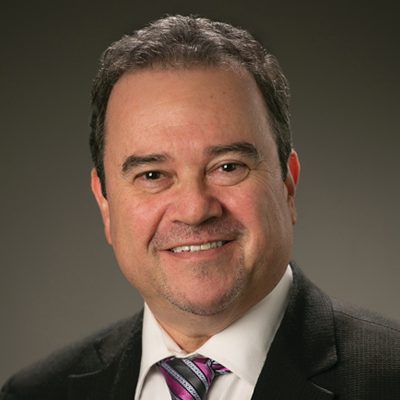
Role
Dr. Arafin will be involved with the research theme 3 on Photonic Devices and Integration. Arafin will bring to CAFE his expertise on photonic device design, processing and characterization. In particular, Arafin and his research team will develop the fabrication and III-V transfer processes required to implement the proposed high-speed photodetectors at the C-band.
Biography
Dr. Arafin is an expert in III-V compound semiconductor technology for compound semiconductor materials and devices, photonic integrated circuits, nanophotonic devices. Arafin has 14 years of experiences on the design, fabrication of widely tunable semiconductor lasers, including vertical-cavity surface emitting lasers (VCSELs). His interdisciplinary academic background in electrical engineering, physics and material science, and past research experience on GaAs-and InP-based photonic devices make him highly qualified to perform the proposed project.
Most relevant prior publications within the last eight years
- C-H. Li, S. H. Ramachandra, I. I. Faruque, S. Dwivedi, and S. Arafin, “Design of green light sources using nonlinear photonics and on-chip pump lasers,” IEEE J. Sel. Top. Quantum Electron., vol. 28, no. 1, pp. 1-8, Art no. 6100308, July 2021.
- [13] R. Arefin, S. H. Ramachandra, H. Jung, W. You, S. M. N. Hasan, H. Turski, S. Dwivedi, S. Arafin, “III-N/Si3N4 integrated photonics platform for blue wavelengths”, IEEE J. Quant. Electron., vol. 56, no. 4, pp. 6300309(1-9), May 2020.
- S. Arafin, A. P. McFadden, B. Paul, S. N. Hasan, J. Gupta, C. J. Palmstrøm and L. A. Coldren, “Study of wet and dry etching processes for antimonide-based photonic ICs,” Opt. Mater. Express, vol. 9, no. 4, pp. 1-9, Mar. 2019.
- S. Arafin, G. Morrison, M. Mashanovitch, L. A. Johansson, and L. A. Coldren, “Compact lowpower consumption single-mode coupled-cavity lasers,” IEEE J. Sel. Top. Quantum Electron., vol. 23, no. 6, pp. 1-9, May. 2017.
- S. Arafin, A. Simsek, S.-K. Kim, W. Liang, D. Eliyahu, A. Matsko, L. Johansson, L. Maleki, M. J. Rodwell, and L. A. Coldren, “Power-efficient Kerr frequency comb based tunable optical source,” IEEE Photon. J., vol. 9, no. 3, pp. 1-14, Mar. 2017.
- S. Arafin, A. Simsek, S.-K. Kim, S. Dwivedi, W. Liang, D. Eliyahu, J. Klamkin, A. Matsko, L. Johansson, L. Maleki, M. J. Rodwell, and L. A. Coldren, “Towards chip-scale optical frequency synthesis based on optical heterodyne phase-locked loop,” Opt. Express, vol. 25, no. 2, pp. 681695, Dec. 2016.
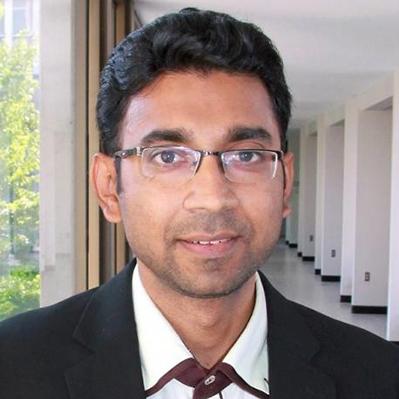
Role
Dr. Ghazisaeidi will be involved with research themes 1 and 3. In theme 1, she will study the thermodynamic phase stability of semiconductor alloys in the presence of strain and interfaces. She will also use Density functional calculations (DFT) to study the effect of strain on ferroelectric phase transitions in the perovskite/III-Nitride ferroelectric FET structures. In theme 3, she will pursue DFT calculations to predict the bandstructure, effective masses, band-offsets and transport in these next gen alloys together with Windl.
Biography
Maryam Ghazisaeidi is an Associate Professor in the Department of Materials Science and Engineering at The Ohio State University. She received her Ph.D. in Theoretical and Applied Mechanics from the University of Illinois at Urbana-Champaign, and her B.S and M.S. degrees from Sharif University of Technology in Tehran, Iran. Her research interest is in the area of computational materials science at the atomic scale with an emphasis on understanding the thermodynamics and properties of alloys as well as understanding structure and properties of defects in materials. She has received the NSF CAREER award in 2015 and the AFOSR Young Investigator Program (YIP) award in 2017. She was selected as the winner of the Computational Materials Science Rising Stars Award for 2020.
Most relevant prior publications within the last eight years
- M. Ghazisaeidi, “Alloy Thermodynamics via the Multi-cell Monte Carlo (MC)2 method”, Computational Materials Science; 193,110322
- Efficient determination of solid-state phase equilibrium with the multi-cell Monte Carlo method” E. Antillon and M. Ghazisaeidi, Physical Review E., 101 (6) 063306 (2020).
- Y. Cheng, S. Yu, A. S. Ahmed, M. Zhu, Y. Rao, M. Ghazisaeidi, J. Hwang, Fengyuan Yang , “Anisotropic Magnetoresistance and Nontrivial Spin Hall Magnetoresistance in Pt/α-Fe2O3 Bilayers”, Physical Review B 100 (22) 220408 (2019).
- C. Niu, Y. Rao, W. Windl and M. Ghazisaeidi, “Multi-cell Monte Carlo method for phase prediction”, npj Computational Materials, 5, 120, (2019).
- C. Niu, C. LaRosa, J. Miao, M. J. Mills and M. Ghazisaeidi , “Magnetically-driven phase transformation strengthening in high entropy alloys”, Nature Communications, 9 1363, (2018).
- C. Niu, W. Windl and M. Ghazisaeidi, “Multi-cell Monte Carlo Relaxation method for predicting phase stability of alloys”, Scripta Mater, 132, pp 9-12 (2017)
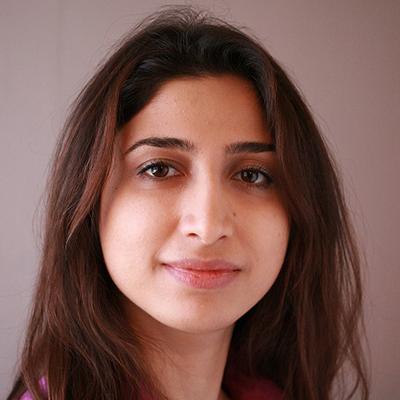
Role
Jinwoo Hwang will take the leading role in electron microscopy characterization of novel semiconductors and devices, which is relevant for all 3 proposed research themes. Using advanced scanning transmission electron microscopy (STEM) techniques, he will investigate the detailed structure of atomic and nanoscale defects in 2D, III-V, and oxide semiconductor materials and devices, which will be required for understanding and optimizing their properties. Hwang’s STEM data will be compared and correlated with other team members’ data, such as from defect spectroscopy (Ringel) and DFT calculation of defects (Ghazisaeidi and Windl) to understand how the structure and defect affect properties, which will in turn benefit the materials development (Jha, Kawakami, Rajan, Stinaff, and Yang) and optimization of device properties (Arafin, Krishna, and Reano).
Biography
Jinwoo Hwang is an Associate Professor of Engineering in the Department of Materials Science and Engineering at the Ohio State University (OSU). He received his PhD from University of Wisconsin, Madison in 2011, and had his postdoctoral training at the University of California, Santa Barbara. He joined OSU as an Assistant Professor in 2014, and promoted to Associate Professor in 2020. Using STEM techniques that he develops, Hwang investigates the structure and defects in wide bandgap semiconductors, low-dimensional materials, oxide and 2D semiconductors, magnetic interfaces, glass and amorphous materials. Notable awards he received include the National Science Foundation CAREER Award (2019), Ralph E. Powe Junior Faculty Enhancement Award from Oak Ridge Associated Universities (2016), and The Albert Crewe Distinguished Postdoctoral Fellow Award from Microscopy Society of America (2014).
Most relevant prior publications within the last eight years
- Tiancong Zhu, Alexander J. Bishop, Tong Zhou, Menglin Zhu, Dante J. O’Hara, Alexander A. Baker, Shuyu Cheng, Robert C. Walko, Jacob J. Repicky, Tao Liu, Jay A. Gupta, Chris M. Jozwiak, Eli Rotenberg, Jinwoo Hwang, Igor Žutić, and Roland K. Kawakami, "Synthesis, magnetic properties, and electronic structure of magnetic topological insulator MnBi2Se4", Nano letters 21, 12, 5083 (2021).
- J. M. Johnson, H-L. Huang, M. Wang, S. Mu, J. B. Varley, A F M Anhar Uddin Bhuiyan, Z. Feng, N. K. Kalarickal, S. Rajan, H. Zhao, C. G. Van de Walle, and J. Hwang, "Atomic scale investigation of aluminum incorporation, defects, and phase stability in β-(AlxGa1-x)2O3 films", APL Materials 9, 051103 (2021)
- Aidan J. Lee, Adam S. Ahmed, Brendan A. McCullian, Side Guo, Menglin Zhu, Sisheng Yu, Patrick M. Woodward, Jinwoo Hwang, P. Chris Hammel, and Fengyuan Yang, "Interfacial Rashba effect-induced anisotropy in nonmagnetic-material/ferrimagnetic-insulator bilayers", Physical Review Letters 124, 257202 (2020).
- Choong Hee Lee, Yuewei Zhang, Jared M. Johnson, Rachel Koltun, Vincent Gambin, John S. Jamison, Roberto C. Myers, Jinwoo Hwang, and Siddharth Rajan, "Molecular Beam Epitaxy of GaN on 2H-MoS2", Appl. Phys. Lett. 117, 123102 (2020).
- Jared M. Johnson, Zhen Chen, Joel B. Varley, Christine M. Jackson, Esmat Farzana, Zeng Zhang, Aaron R. Arehart, Hsien-Lien Huang, Arda Genc, Steven A. Ringel, Chris G. Van de Walle, David A. Muller, and Jinwoo Hwang, "Unusual formation of point defect complexes in the ultra-wide band gap semiconductor β-Ga2O3", Physical Review X 9, 041027 (2019).
- Y. Kim, S. S. Cruz, Y. Song, B. Alawode, J. M. Johnson, C. Heidelberger, W. Kong, S. Choi, Y. S. Lee, C. Choi, E. A. Fitzgerald, A. Kolpak, J. Kong, J. Hwang, and J. Kim, "Remote epitaxy through graphene for two-dimensional material based layer transfer", Nature 544, 340 (2017).

Role
Dr. Interlante will be involved with the Experiential Learning component of the project, creating partnership opportunities and identifying student participants through the Ohio Five and its OSU Summer Research Experience (SURE) program. OH5 staff have significant experience serving as the “admissions office” for the SURE program, recruiting and enrolling academically excellent undergraduate students in research internships at Ohio State. Interlante will also provide expertise from her significant experience cultivating cross-sector academic partnerships, evaluating student success, and exploring avenues for future funding.
Biography
Lindsey Interlante is the Executive Director of the Five Colleges of Ohio, Inc., a consortium facilitating collaboration between the College of Wooster, Denison University, Kenyon College, Oberlin College, and Ohio Wesleyan University. Previously, Interlante created and expanded the Colonial Academic Alliance’s collaborative grant program, driving academic innovation and experiential learning across ten universities. She has also provided leadership for institutional effectiveness, grant making, and policy research in academic and government organizations. Interlante received her MPA in 2005 from University of Delaware, MA in Geography in 2010 from Arizona State University, and PhD in Urban Affairs & Public Policy from University of Delaware in 2022.
Most relevant prior publications within the last eight years
- Interlante, L., De Riemer, C., Tirpak, P., & Palomino, A. (2016). Oral Communication Competency Across the Virginia Community College System: A Faculty-Designed Assessment. Inquiry: The Journal of the Virginia Community Colleges, 20(1).
- Interlante, L. (2014). Student success in the workplace: An update on job placement (Student Success Snapshot #29). Virginia Community College System, Richmond, VA.
- Rey, S.J., Anselin L., Folch, D.C., Arribas-Bel, D., Sastré-Gutiérrez, M.L., and Interlante, L. (2010). Measuring Spatial Dynamics of Metropolitan Areas. Economic Development Quarterly, 25(1), 54-64.
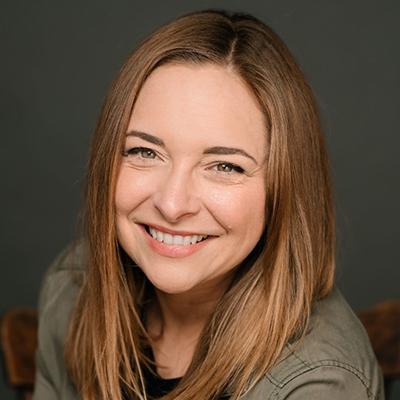
Role
Dr. Jha will be involved with the research theme 2 on CMOS Back-End-Of-Line (BEOL) Memory Devices and Integration. Prof. Jha will work on developing BEOL compatible Ferroelectric Field Effect Transistor (FeFET) by integrating low temperature channel materials and ferroelectric oxides. Materials and devices will be developed to achieve multi-state tunable threshold voltages at low voltages (less than 1V) with high endurance and retention. Particular emphasis will be provided on achieving P-channel FeFET devices. She will collaborate with Co-PIs Kawakami and Stinaff on low-temperature 2D materials, Co-PI Fang on low-temperature ferroelectric oxides, Ringle on defect characterization at interfaces, and Co-PI Wolfgang and Maryam on modeling the materials/interface characteristics and translating to the experimentally-benchmarked TCAD models for devices.
Biography
Dr. Rashmi Jha is a Professor in Electrical and Computer Engineering (ECE) Department at the University of Cincinnati. She worked as a Process Integration Engineer for high-k/metal gate stacks in Advanced CMOS technologies (45nm/32nm/22nm) at IBM Semiconductor Research and Development Center (SRDC), East Fishkill NY in state of the art 300 mm Fabrication facility prior to moving to the academia. She finished her Ph.D. and M.S. in Electrical Engineering from North Carolina State University in 2006 and 2003, respectively, and B.Tech. in Electrical Engineering from IIT Kharagpur, India in 2000. She has been granted 13 US patents and has authored/co-authored several publications. She has been a recipient of Summer Faculty Fellowship Award from AFRL/AFOSR in 2021 and 2017, CAREER Award from the National Science Foundation (NSF) in 2013, IBM Faculty Award in 2012, and IBM Invention Achievement Award in 2007.
Most relevant prior publications within the last eight years
- E. Herrmann, A. Rush, T. Bailey and R. Jha, "Gate Controlled Three-Terminal Metal Oxide Memristor," in IEEE Electron Device Letters, vol. 39, no. 4, pp. 500-503, April 2018, doi: 10.1109/LED.2018.2806188.
- Mayersky, J., Hilton, A., Pacley, S., Jha, R., “Investigation and characterization of the annealing effects on the ferroelectric behavior of PLD BaTiO3”, MRS Communications 11, 288–294 (2021). https://doi.org/10.1557/s43579-021-00030-2.
- Siddharth Barve, Joshua Mayersky, Andrew J. Ford; Alexander Jones, Bayley King, Aaron Ruen, Rashmi Jha, “NeuroSOFM: A Neuromorphic Self-Organizing Feature Map Heterogeneously Integrating RRAM and FeFET," in IEEE Journal on Exploratory Solid-State Computational Devices and Circuits, vol. 7, no. 2, pp. 97-105, Dec. 2021, doi: 10.1109/JXCDC.2021.3119489.
- Alex Jones, Rashmi Jha, "A Compact Gated-Synapse Model for Neuromorphic Circuits", IEEE Transactions on Computer-Aided Design of Integrated Circuits and Systems, 2020. DOI: 10.1109/TCAD.2020.3028534.
- T.J. Bailey, R. Jha, “Understanding Synaptic Mechanisms in SrTiO3 RRAM Devices”, IEEE Transactions on Electron Devices, Vol. 65, No. 8, 2018. DOI: 10.1109/TED.2018.2847413.
- Wenbo Chen, Wenchao Lu, Branden Long, Yibo Li, David Gilmer, Gennadi Bersuker, Swarup Bhunia, and Rashmi Jha, “Switching characteristics of W/Zr/HfO2/TiN ReRAM devices for multi-level cell non-volatile memory applications”, IOP Semiconductor Science and Technology, Vol.30, Iss.7, 2015.
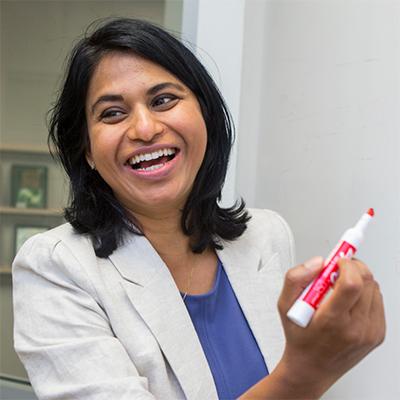
Role
Dr. Kawakami will be involved with research theme 1 on Fabrication Technology for 2D Semiconductors. Prof. Kawakami’s work will be focused on the synthesis of monolayer and few-layer transition metal dichalcogenide semiconductors by molecular beam epitaxy. He will collaborate with Stinaff on material synthesis, Jha on device fabrication, Windl on modeling of doping, Ringel on defect characterization, and Hwang on structural characterization.
Biography
Roland Kawakami is a Professor in the Department of Physics at the Ohio State University. He was previously a Professor in the Department of Physics and Astronomy at the University of California, Riverside. He received his Ph.D. in Physics in 1999 from the University of California, Berkeley and was a postdoctoral researcher at the University of California, Santa Barbara. He joined the University of California, Riverside as a tenure track faculty member in 2002. His group is involved in the studies of quantum materials focusing on magnetic and topological phenomena, and studies of 2D materials for electronic charge and spin transport.
Most relevant prior publications within the last eight years
- JWenyi Zhou, Alexander J. Bishop, Menglin Zhu, Igor Lyalin, Robert Walko, Jay A. Gupta, Jinwoo Hwang, and Roland K. Kawakami, “Kinetically-Controlled Epitaxial Growth of Fe3GeTe2 van der Waals Ferromagnetic Films,” ACS Applied Electronic Materials (published online: https://doi.org/10.1021/acsaelm.2c00185) (2022).
- Tiancong Zhu, Alexander J. Bishop, Tong Zhou, Menglin Zhu, Dante J. O’Hara, Alex A. Baker, Shuyu Cheng, Robert C. Walko, Jacob J. Repicky, Tao Liu, Jay A. Gupta, Chris M. Jozwiak, Eli Rotenberg, Jinwoo Hwang, Igor Žutić, and Roland K. Kawakami, “Synthesis, Magnetic Properties, and Electronic Structure of Magnetic Topological Insulator MnBi2Se4,” Nano Letters 21, 5083 (2021).
- Tiancong Zhu, Dante J. O’Hara, Brent A. Noesges, Menglin Zhu, Jacob J. Repicky, Mark R. Brenner, Len J. Brillson, Jinwoo Hwang, Jay A. Gupta, and Roland K. Kawakami, “Coherent Growth and Characterization of van der Waals 1T-VSe2 Layers on GaAs(111)B Using Molecular Beam Epitaxy,” Phys. Rev. Materials 4, 084002 (2020).
- Dante J. O’Hara, Tiancong Zhu, Amanda H. Trout, Adam S. Ahmed, Yunqiu K. Luo, Choong H. Lee, Mark R. Brenner, Siddharth Rajan, Jay A. Gupta, David W. McComb, and Roland K. Kawakami, “Room Temperature Intrinsic Ferromagnetism in Epitaxial Manganese Selenide Films in the Monolayer Limit,” Nano Letters 18, 3125–3131 (2018).
- Jinsong Xu, Tiancong Zhu, Yunqiu Kelly Luo, Yuan-Ming Lu and Roland K. Kawakami, “Strong and Tunable Spin Lifetime Anisotropy in Dual-Gated Bilayer Graphene,” Physical Review Letters 121, 127703 (2018).
- Yunqiu (Kelly) Luo, Jinsong Xu, Tiancong Zhu, Guanzhong Wu, Elizabeth J. McCormick, Mahesh R. Neupane, Wenbo Zhan, and Roland K. Kawakami, “Opto-Valleytronic Spin Injection in Monolayer MoS2/Few-Layer Graphene Hybrid Spin Valves,” Nano Letters 17, 3877–3883 (2017).
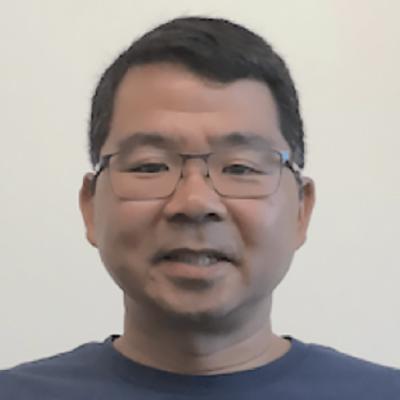
Role
Dr. Krishna will be involved with the research theme 3 on Photonic Devices and Integration. Prof. Krishna’s work will be focused on development of high gain-bandwidth product photodetectors. He will collaborate with Windl and Ghazisaeidi on the modeling, Ringel on defect characterization and Hwang on structural characterization. He will be working on integration methodologies with semiconductor optical amplifiers (SOAs) (Arafin) and waveguide optical modulators (Reano).
Biography
Sanjay Krishna is the George R Smith Professor of Engineering in the ECE department at the Ohio State University. He was previously the Director of the Center for High Technology Materials, Professor and Regents Lecturer in the Department of Electrical and Computer Engineering at the University of New Mexico. Sanjay received his M.S. in Electrical Engineering in 1999 and PhD in Applied Physics in 2001 from the University of Michigan. He joined UNM as a tenure track faculty member in 2001. His group is involved in the development of next generation infrared detectors, arrays and imagers.
Most relevant prior publications within the last eight years
- Watts, Claire M., David Shrekenhamer, John Montoya, Guy Lipworth, John Hunt, Timothy Sleasman, Sanjay Krishna, David R. Smith, and Willie J. Padilla. "Terahertz compressive imaging with metamaterial spatial light modulators." Nature Photonics 8, no. 8 (2014): 605-609.
- Krishna, Sanjay, Seunghyun Lee, Sri Harsha Kodati, Mariah Schwartz, Hyemin Jung, Theodore J. Ronningen, Bingtian Guo et al. "Linear Mode Avalanche Photodiodes with Antimonide Multipliers on InP Substrates." IEEE Journal of Quantum Electronics (2022).
- Lee, S., B. Guo, S. H. Kodati, H. Jung, M. Schwartz, A. H. Jones, M. Winslow et al. "Random alloy thick AlGaAsSb avalanche photodiodes on InP substrates." Applied Physics Letters 120, no. 7 (2022): 071101.
- Guo, Bingtian, Xiao Jin, Seunghyun Lee, Sheikh Z. Ahmed, Andrew Jones, Xingjun Xue, Baolai Liang et al. "Impact ionization coefficients of digital alloy and random alloy Al 0.85 Ga 0.15 As 0.56 Sb 0.44 in a wide electric field range." Journal of Lightwave Technology (2022).
- Kodati, S. H., S. Lee, B. Guo, A. H. Jones, M. Schwartz, M. Winslow, N. A. Pfiester et al. "AlInAsSb avalanche photodiodes on InP substrates." Applied Physics Letters 118, no. 9 (2021): 091101.
- Lee, S., S. H. Kodati, B. Guo, A. H. Jones, M. Schwartz, M. Winslow, C. H. Grein, T. J. Ronningen, J. C. Campbell, and S. Krishna. "Low noise Al0. 85Ga0. 15As0. 56Sb0. 44 avalanche photodiodes on InP substrates." Applied Physics Letters 118, no. 8 (2021): 081106.
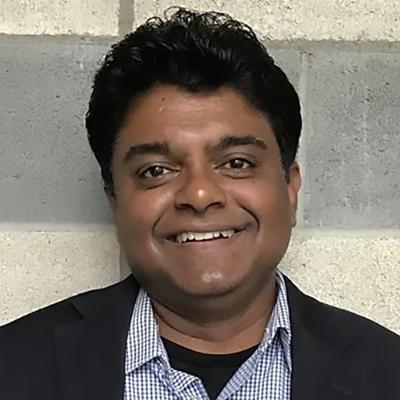
Role
Dr. Siddharth Rajan will be involved in the fabrication and characterization of III-Nitride transistors. Key activities will include developing fabrication technologies for ultra-scaled transistors with extreme-permittivity dielectrics, characterizing electronic properties and device parameters, and understanding ferroelectric and interface phenomena in the structures.
Biography
Dr. Rajan is a Professor of Electrical and Computer Engineering, and Materials Science and Engineering departments at The Ohio State University, where he joined the faculty in 2008. He received his PhD in Electrical and Computer Engineering in 2006 from University of California, Santa Barbara, and has held research positions at UC Santa Barbara and GE Global Research. He is recipient of Best Student Paper Awards at Electronic Materials Conference (2006) and Workshop on Frontiers of Electronics (2008), Most Valuable Contribution Award at the Workshop on Compound Semiconductor Materials and Devices (WOCSEMMAD) in 2013, Young Investigator Award of the 2017 North American Molecular Beam Epitaxy Conference (NAMBE), the Harrison Award for Research Excellence from Ohio State University College of Engineering in 2018, and Japan Society of Applied Physics (JSAP) Outstanding Paper Award in 2018.
Most relevant prior publications within the last eight years
- Rahman, Mohammad Wahidur, Nidhin Kurian Kalarickal, Hyunsoo Lee, Towhidur Razzak, and Siddharth Rajan. "Integration of high permittivity BaTiO3 with AlGaN/GaN for near-theoretical breakdown field kV-class transistors." Applied Physics Letters 119, no. 19 (2021): 193501.
- Chandrasekar, Hareesh, Towhidur Razzak, Caiyu Wang, Zeltzin Reyes, Kausik Majumdar, and Siddharth Rajan. "Demonstration of Wide Bandgap AlGaN/GaN Negative‐Capacitance High‐Electron‐Mobility Transistors (NC‐HEMTs) Using Barium Titanate Ferroelectric Gates." Advanced Electronic Materials 6, no. 8 (2020): 2000074.
- Xia, Zhanbo, Caiyu Wang, Nidhin Kurian Kalarickal, Susanne Stemmer, and Siddharth Rajan. "Design of transistors using high-permittivity materials." IEEE Transactions on Electron Devices 66, no. 2 (2019): 896-900.
- Rahman, Mohammad Wahidur, Hareesh Chandrasekar, Towhidur Razzak, Hyunsoo Lee, and Siddharth Rajan. "Hybrid BaTiO3/SiNx/AlGaN/GaN lateral Schottky barrier diodes with low turn-on and high breakdown performance." Applied Physics Letters 119, no. 1 (2021): 013504.
- Boucherit, M., O. Shoron, C. A. Jackson, T. A. Cain, M. L. C. Buffon, C. Polchinski, S. Stemmer, and S. Rajan. "Modulation of over 1014 cm− 2 electrons in SrTiO3/GdTiO3 heterostructures." Applied Physics Letters 104, no. 18 (2014): 182904.
- Boucherit, M., O. F. Shoron, T. A. Cain, C. A. Jackson, S. Stemmer, and S. Rajan. "Extreme charge density SrTiO3/GdTiO3 heterostructure field effect transistors." Applied Physics Letters 102, no. 24 (2013): 242909.
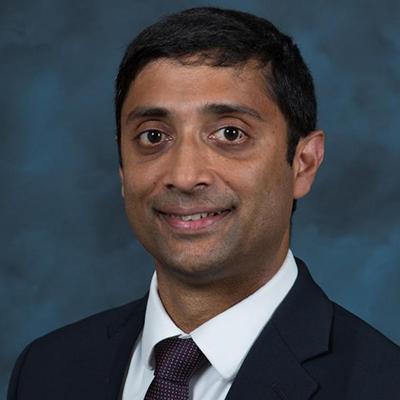
Role
Dr. Reano will be involved in research theme 3 on Photonic Devices and Integration. Prof. Reano’s work will be focused on investigating direct bonding and chemical mechanical polishing for the fabrication of GaAsSb/Si heterojunction detectors. He will collaborate with Krishna and Arafin for the materials and device fabrication.
Biography
Ronald M. Reano received his PhD in Electrical Engineering from the University of Michigan in 2004. He is currently a Professor in the Department of Electrical and Computer Engineering at The Ohio State University, Columbus, where he leads the Integrated Optics Laboratory and serves as co-director of the Center for Quantum Information Science and Engineering. Prof. Reano’s research focuses on chip-scale waveguide integrated photonics for innovation in sensors, communications systems, and computing in the classical and quantum domains. His group specializes in silicon photonics and lithium niobate on insulator. Prof. Reano is the recipient of the DARPA Young Faculty Award, the ARO Young Investigator Award, the NSF CAREER Award, and the Ohio State University College of Engineering McCarthy Teaching Award.
Most relevant prior publications within the last eight years
- Karan Prabhakar, Ryan J. Patton, and Ronald M. Reano, “Stress reduction and wafer bow accommodation for the fabrication of thin film lithium niobate on oxidized silicon,” Journal of Vacuum Science and Technology B 39, 062208 (2021).
- Ryan Patton and Ronald M. Reano, “”Higher Order Mode Conversion from Berry’s Phase in Silicon Optical Waveguides,” IEEE Photonics Journal, doi: 10.1109/JPHOT.2021.3104180 (2021).
- Tyler Nagy and Ronald M. Reano, “Reducing leakage current during periodic poling of ion-sliced x-cut MgO doped lithium niobate thin films,” Optical Materials Express 9, 3146-3155 (2019).
- M. Wood, J. R. Burr, and R. M. Reano, “7 nm/V DC tunability and millivolt scale switching in silicon carrier injection degenerate band edge resonators,” Optics Express 24, 23481 – 23493 (2016).
- L. Chen, Q. Xu, M. G. Wood, and R. M. Reano, “Hybrid silicon and lithium niobate electro-optical ring modulator,” Optica 1, 112 – 118 (2014).
- Q. Xu, L. Chen, M. Wood, and R. M. Reano, “Electrically tunable optical polarization rotation on a silicon chip using Berry’s phase,” Nature Communications 5, 5337 (2014).
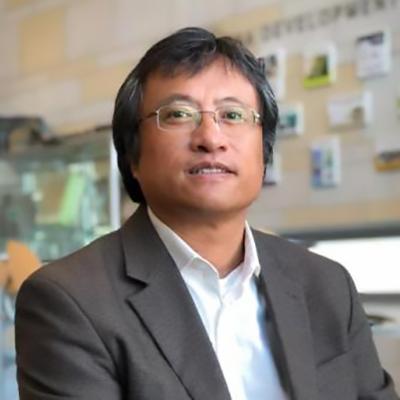
Role
Dr. Sayre will serve as the student experiential lead for CAFE. He will be responsible for managing all activities associated with the proposed student plan. He will focus on providing immersive, interdisciplinary semiconductor fabrication training experiences for graduate and undergraduate students using experiential opportunities.
Biography
Dr. Sayre is an Assistant Vice President in the Office of Research and the Director of Innovation for the Institute for Materials Research at The Ohio State University. He leads the translation of the knowledge and assets from the Institute to benefit our world. He is also a Research Associate Professor in the Materials Science and Engineering department where his interdisciplinary research interests are based in innovation and translating science into products through applied research and polymer engineering science. Prior to joining Ohio State, Dr. Sayre held the positions of Director of Advanced Materials and Internal Research and Development at Battelle Memorial Institute. He is an inventor of several commercialized technologies in the areas of fuel cells, impact barriers, and vehicle armor. He holds a PhD in Materials Engineering Science from Virginia Tech.
Most relevant prior publications within the last eight years
- Stasik, M.C.; Sayre, J.R. Increased Force Generation in Electroactive Polymers 9,951,757 2018.
- Sayre, J.R.; Valentine, K.L.; Pollock, C.E. Armor System with Multi-Hit Capacity and Method of Manufacture 9,919,492, 2018.
- Boyd, R.; Perry, M. J.; Sayre, J. R. Golf club head or other ball striking device with face having modulus variance 9,579,548, 2017.
- Sayre, J.; Risser, S.; Manning, A.J. Multifunctional cell for structural applications 9,520,580, 2016.
- Sayre, J.; Stasik, M.; Plaxico, C.; Moore, M.; McGinniss, V.D.; Kennedy, J. Electroactive Polymer (EAP)-Based Rotary Motion Devices. 9,379,644, 2016.
- Sayre, J.R.; McGinniss, V.; Tolbert, C.B.; Jenkins, K.J.; Ellis, J.L.; Hutson, T.B.; Angel, S.; Thurston, R. PBO Fibers with Improved Mechanical Properties when Exposed to High Temperatures and High Relative Humidity. 9,279,214, 2016.
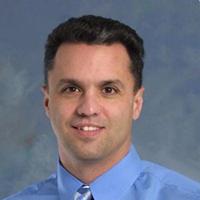
Role
Dr. Stinaff will be involved with the research theme 1 on Materials. Prof. Stinaff’s work will be focused on 2D material synthesis using chemical vapor deposition (CVD). He will collaborate with Kawakami on complementary CVD/MBE processes, with Windl and Ghazisaeidi on modeling, Ringel on defect characterization, and Hwang on structural characterization. He will also be working on device integration with Jha, and waveguide optical modulator integration with Reano.
Biography
Eric Stinaff is a Professor in the Physics and Astronomy Department at Ohio University (OU), and Director of the Nanoscale and Quantum Phenomena Institute at OU. Eric received his Ph.D. degree in Physics from Iowa State University in 2002 and was a National Research Council Postdoctoral Fellow at the Naval Research Laboratory (NRL) in Washington, DC, from 2003-2006. He joined Ohio University in 2006 where his group investigates the optical and electronic properties of novel semiconductor nanomaterials, nanostructures, and nanostructure-based devices.
Most relevant prior publications within the last eight years
- Maryam Bizhani, Ruhi Thorat, William Poston, Thushan Wickramasinghe, Shrouq H. Aleithan, and Eric Stinaff, “Thermal Annealing Effects on Naturally Contacted Monolayer MoS2,” Phys. Status Solidi B., 258: 2000426 (2021)
- Thushan E. Wickramasinghe, Gregory Jensen, Ruhi Thorat, Miles Lindquist, Shrouq H. Aleithan, and Eric Stinaff, “Complementary growth of 2D transition metal dichalcogenide semiconductors on metal oxide interfaces,” Appl. Phys. Lett. 117, 213104 (2020)
- Shrouq H. Aleithan, Thushan E. Wickramasinghe, Miles Lindquist, Sudiksha Khadka, and Eric Stinaff, “Growth of Complex 2D Material-Based Structures with Naturally Formed Contacts,” ACS Omega 4(5) 9557-9562 (2019)
- Sudiksha Khadka, Thushan E. Wickramasinghe, Miles Lindquist, Ruhi Thorat, Shrouq H. Aleithan, Martin E. Kordesch, and Eric Stinaff, “As-grown two-dimensional MoS2 based photodetectors with naturally formed contacts,” Appl. Phys. Lett. 110, 261109 (2017)
- Khadka, S., Lindquist, M., Aleithan, S. H., Blumer, A. N., Wickramasinghe, T. E., Kordesch, M. E. and Stinaff, E., “Concurrent Growth and Formation of Electrically Contacted Monolayer Transition Metal Dichalcogenides on Bulk Metallic Patterns,” Adv. Mater. Interfaces, 4, 1600599 (2017)
- Shrouq H. Aleithan, Maksim Y. Livshits, Sudiksha Khadka, Jeffrey J. Rack, Martin E. Kordesch, and Eric Stinaff, “Broadband femtosecond transient absorption spectroscopy for a CVD MoS2 monolayer,” Phys. Rev. B 94, 035445 (2016)

Role
Dr. Stiner-Jones will be involved with the recruitment of undergraduates for REU experiences and graduate students in partnership with IMR staff and project faculty. Prof. Stiner-Jones is the primary institutional contact for the National GEM Consortium and will lead the effort to connect faculty with the database and into GEM’s fellow evaluation process. Prof. Stiner-Jones leads and is a co-facilitator of the Better Mentoring = Better Science faculty mentor training.
Biography
La’Tonia Stiner-Jones is Associate Dean of Graduate Programs in the College of Engineering and Associate Professor of Practice in Biomedical Engineering at The Ohio State University. She serves as Director of the college’s BUCKEYE REU program and Associate Director of the Center of Emergent Materials. She received her Bachelors and Doctorate from Wright State University and her MBA from Capital University. Dr. Stiner-Jones is an immunologist and after completing her PhD in Biomedical Sciences, she completed postdocs in neuroimmunology and psychoneuroimmunology at Ohio State. Her area of expertise is the impacts of psychological stress on the immune response. Her work has been published in numerous scientific journals and presented both nationally and internationally.
Most relevant prior publications within the last eight years
- Stiner-Jones L. Work in Progress: Effectiveness of a REU SITE at Preparing Students for Graduate School. (2022). American Society for Engineering Annual Illinois-Indiana Section Conference, Accepted.
- Stiner-Jones L. Work in Progress Preparing the Next Generation of Biomedical Engineering Researchers by Leveraging a Research Experience for Undergraduates. (2021). American Society for Engineering Education Annual Illinois-Indiana Section Conference, Virtual.
- Stiner-Jones L. and Windl W. Work in Progress: Aligning What We Want With What We Seek: Increasing Comprehensive Review in the Graduate Admissions Process. (2019). American Society for Engineering Education Annual Conference and Exposition, Tampa, FL.
- Stiner-Jones L. The Effectiveness of an On-Campus Open House Targeting Underrepresented Student. (2018). American Society for Engineering Education Annual Conference and Exposition, Salt Lake City, UT.
- Stiner-Jones L. Promoting an Inclusive Culture. (2018). American Society for Engineering Education Annual Conference and Exposition, Salt Lake City, UT.
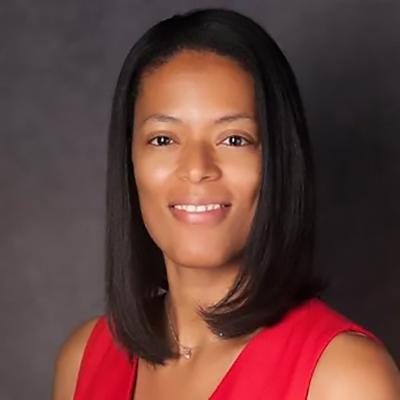
Role
Dr. Wolfgang Windl will be involved with research theme 1 on Fabrication Technology for 2D Semiconductors. Prof. Windl’s work there will be focused on electronic structure calculations of dopants and characterization with Kawakami, Hwang, ands Ringel and on developing new descriptions of alloy semiconductor thermodynamics and properties with Ghazisaeidi. The property predictions will be used for device development with next gen alloy- and 2D semiconductors within research topic 3.
Biography
Wolfgang Windl is Professor in the Department of Materials Science and Engineering at OSU and works on atomistic materials computations and semiconductor process simulations. Before joining OSU in 2001, he spent four years with Motorola, ending his tenure as Principal Staff Scientist in the Digital DNA Laboratories in Austin, TX, working on frontend process simulation. For his pioneering work on extension of process simulation into the atomistic realm he received the inaugural Fraunhofer-Bessel Research Award from the Humboldt Society in 2006. Previously, he was postdoc at Los Alamos National Laboratory and Arizona State University and received diploma and DSc. in Physics from the University of Regensburg, Germany. Within CAFÉ, Dr. Windl will be responsible for electronic structure calculations including optical properties and transport parameters.
Most relevant prior publications within the last eight years
- W. Windl and S.-C. Chien, Free-Energy Parameterization and Thermodynamics in Si-Ge-Sn Alloys, Phys. Status Solidi B (https://doi.org/10.1002/pssb.202100590, 2022).
- A. Chmielewski, Z. Deng, M. Saleh, J. Jesenovec, W. Windl, K. Lynn, J. McCloy, and N. Alem, Atomic-scale characterization of structural and electronic properties of Hf doped b-Ga2O3, Appl. Phys. Lett. 119, 172102 (2021).
- D. Shcherbakov, P. Stepanov, S. Memaran, Y. Wang, Y. Xin, J. Yang, K. Wei, R. Baumbach, W. Zheng, K. Watanabe, T. Taniguchi, M. Bockrath, D. Smirnov, T. Siegrist, W. Windl, L. Balicas, and C. N. Lau, Layer-and gate-tunable spin-orbit coupling in a high-mobility few-layer semiconductor, Science Advances 7 (5), eabe2892 (2021).
- B. He, Y. Wang, M. Q. Arguilla, N. D. Cultrara, M. R. Scudder, J. E. Goldberger, W. Windl, and J. P. Heremans, The Fermi surface geometrical origin of axis-dependent conduction polarity in layered materials, Nature Materials 18, 568–572 (2019).
- E. T. McClure, M. Ball, W. Windl, and P. M. Woodward, Cs2AgBiX6 (X = Br, Cl): New Visible Light Absorbing, Lead-Free Halide Perovskite Semiconductors, Chem. Mater. 28 (5), 1348-1354 (2016).
- O. D. Restrepo, R. Mishra, J. E. Goldberger, and W. Windl, Tunable Gaps and Enhanced Mobilities in Strain-Engineered Silicane, J. Appl. Phys. 115, 033711 (2014).
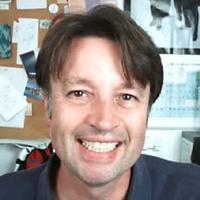
Role
Dr. Fengyuan Yang will be involved with research theme 2 on growing and characterizing extreme-k and ferroelectric perovskite epitaxial layers on nitrides for high-power-high-efficiency RF applications. He will work with Rajan on the fabrication and testing of field-effect transistors using these perovskite/nitride structures, Windl and Ghazisaeidi on modeling of ferroelectrics/nitride devices, Ringel on defect characterization, and Hwang on TEM characterization.
Biography
Fengyuan Yang is a Professor of Physics, Director of Center for Exploration of Novel Complex Materials, and Associate Director of Institute for Materials Research at OSU. He has also been a co-leader of an Interdisciplinary Research Group (IRG) of the Center for Emergent Materials (CEM), an NSF MRSEC for 10 years over three MRSEC funding cycles. He is a leading expert in epitaxial deposition of single crystalline oxide films, including perovskites, double perovskites, garnets, and binary oxides, using a unique off-axis sputtering technique. These epitaxial films and heterostructures with state-of-the-art quality are the materials platforms for the investigation of electronic and spin transport phenomena, spin dynamics and spin pumping, and electrical control of magnetism. Yang has committed 0.5 month per year working on growing and characterizing extreme-k and ferroelectric perovskite epitaxial layers on nitrides for high-power-high-efficiency RF applications.
Most relevant prior publications within the last eight years
- Z. B. Xia, et al. Appl. Phys. Lett. 115, 252104 (2019)
- K.-Y. Meng, et al. Nano Lett. 19, 3169 (2019)
- H. L. Wang, et al. Appl. Phys. Lett. 114, 232406 (2019)
- F. Y. Yang, et al. J. Phys. D: Appl. Phys. 51, 253001 (2018)
- B. D. Esser, et al. Phys. Rev. Lett. 117, 176101 (2016)
- J. M. Lucy, et al. Phys. Rev. B 90, 180401(R) (2014)
